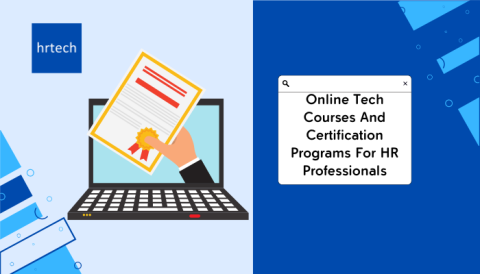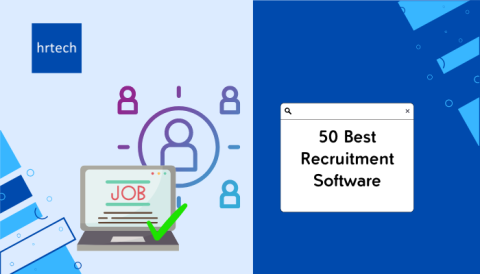HR risk management is essential for safeguarding a company’s workforce and overall success. It covers several key areas that can pose risks, such as high employee turnover, data security breaches, and compensation fairness. Each of these areas requires careful attention and proactive strategies to prevent potential problems from escalating.
By identifying risks early and paying best practices, like regular audits, employee training, and strong cybersecurity measures, businesses can ensure compliance, protect employee well-being, and foster a positive work environment. Proper HR risk management not only minimizes threats but also strengthens the company’s overall stability and resilience.
What is HR Risk Management?
HR risk management is about protecting your business from problems related to your employees and workplace practices. It involves spotting potential risks early, whether they’re legal issues, data privacy concerns, or employee dissatisfaction, and taking steps to prevent them from becoming bigger problems. By effectively managing these risks, companies can stay compliant with laws, protect employee information, and keep the workplace productive.
Here’s how HR risk management works:
- It helps keep your company out of legal trouble by following employment laws.
- It protects sensitive employee data from being stolen or mishandled.
- It ensures a positive work environment, reducing conflicts and keeping employees happy and motivated.
HR risk management is key to running a smooth, compliant, and secure workplace
Key Components of HR Risk Management
Making sure your company follows employment laws and internal rules to avoid trouble. Regular checks and training can help maintain compliance and avoid fines or lawsuits. Using compliance management tools can ensure proper adherence to regulations.
A data breach could cause legal problems and damage trust within the company. Implementing cybersecurity in HR systems can help safeguard sensitive information.
Handling workplace relationships and conflicts to create a happy, productive workplace. Poor relationships lead to high turnover, low morale, and reduced productivity. Investing in employee engagement programs can foster a positive environment.
| Key Component | What It Means | What Can Go Wrong If Ignored | How to Handle It |
| Compliance | Making sure your company follows employment laws and internal rules to avoid trouble. | Fines, lawsuits, and damage to your company’s reputation. | Do regular checks, stay updated on laws, have clear HR policies, and train your staff to follow them. |
| Data Security | Protecting sensitive employee info, like personal details and pay data, from being stolen or misused. | Data breaches, stolen identities, loss of employee trust, and legal problems. | Use secure systems, do regular security checks, train staff on privacy, and follow data protection laws like GDPR. |
| Employee Relations | Handling workplace relationships and conflicts to create a happy, productive workplace. | High employee turnover, low morale, more conflicts, and less productivity. | Encourage open communication, offer conflict resolution training, keep employees engaged, and give regular feedback. |
What are the common types of HR risks?

HR risk management involves identifying and addressing various risks that can impact a company’s workforce and overall success. These risks can come from legal issues, internal processes, employee behavior, or broader strategic concerns. Below are some common types of HR risks every organization should consider:
1. Compliance Risks
One of the most critical aspects of HR risk management is ensuring the organization complies with all employment laws and regulations. Failure to do so can result in fines, legal penalties, and reputational damage. HR software can assist in maintaining compliance effortlessly.
- Non-compliance leads to legal action.
- Examples include violations of labor laws or health and safety regulations
2. Operational Risks
These risks occur in the day-to-day operations of HR, like recruitment, onboarding, and training. Inefficiencies or errors in these processes can lead to poor hiring decisions, undertrained employees, or low productivity. Using recruitment tools can help streamline these operations and reduce risks.
- Ineffective recruitment can result in a bad hire.
- Lack of proper training impacts employee performance.
3. Financial Risks
Financial risks in HR involve how employee-related decisions and behaviors affect a company’s bottom line. Poor management of compensation or benefits can lead to increased turnover or costly lawsuits. Leveraging HRMS solutions can help manage payroll and benefits efficiently.
- High turnover increases hiring and training costs.
- Lawsuits from employment disputes can be costly.
4. Reputational Risks
A company’s reputation can be severely damaged by HR issues such as data breaches, unethical behavior, or employee misconduct. Data breaches erode employee trust and can harm the company’s image. Implementing strong data security in HR measures can prevent such issues.
- Data breaches erode employee trust.
- Employee misconduct can lead to negative publicity.
5. Strategic Risks
- Long-term HR strategies, such as leadership development or talent retention, can significantly affect the company’s growth and success. Poor strategic decisions can weaken the company’s competitive edge. Developing strong leadership development programs ensures smooth succession planning and retains top talent.
- Lack of leadership development weakens succession planning.
- Failure to retain key talent impacts the organization’s future.
By managing these HR risks effectively, organizations can create a safer, more productive work environment while protecting their financial and strategic interests.
Key Areas of HR Risk Management
HR risk management focuses on several critical areas that can directly impact a company’s stability and success. These include managing workforce risks like turnover and burnout, ensuring proper handling of employee data through strong cybersecurity measures, maintaining fairness in compensation and benefits, and handling the challenges that come with mergers and acquisitions.
| Key Area | Description | Risks if Neglected | Best Practices |
| Workforce Risks | Includes employee turnover and burnout, which can affect productivity and morale. | High turnover rates, low engagement, and reduced productivity. | Monitor employee satisfaction, offer wellness programs, and provide career development opportunities. |
| Employee Data Management | Focuses on protecting sensitive employee data from breaches and ensuring privacy compliance. | Data breaches, loss of trust, and potential legal actions due to privacy violations. | Implement strong cybersecurity measures and ensure compliance with data protection laws like GDPR. |
| Compensation & Benefits | Ensures fair and competitive compensation to avoid dissatisfaction and potential legal disputes. | Wage disputes, low employee satisfaction, and difficulty attracting/retaining talent. | Conduct regular market salary reviews and ensure transparency in compensation policies. |
| Mergers & Acquisitions | Deals with managing workforce transitions and risks during mergers and acquisitions. | Increased turnover, employee uncertainty, and loss of key talent during transitions. | Communicate openly with employees, provide retention incentives, and plan for smooth transitions. |
Best Practices for Mitigating HR Risks
To effectively manage HR risks, it’s essential to have a proactive approach that includes regular reviews, proper employee education, and the use of structured frameworks. By focusing on compliance management, regular risk assessments, and thorough employee training, organizations can minimize potential risks and create a safer, more productive work environment.
Compliance Management: Use payroll automation to ensure adherence to labor laws and automate repetitive tasks.
Risk Assessment: Use HR analytics to track trends and predict risks before they escalate.
Employee Training: Implement learning management systems to keep employees informed about compliance, ethics, and risk management.
Role of Technology in HR Risk Management
Technology plays a crucial role in managing HR risks by providing tools that help identify, predict, and mitigate potential problems. From using AI in HR to spot trends and risks early, to automating processes that reduce human error, and enhancing cybersecurity to protect sensitive employee data, tech solutions are a vital part of modern HR risk management.
| Technology | How It Helps in HR Risk Management |
| HR Analytics | Analyzes data to identify trends and predict potential risks before they escalate. |
| Automation | Automates repetitive tasks, reducing the chances of errors and improving compliance. |
| Cybersecurity | Strengthens data protection measures, safeguarding sensitive employee information. |
What are the best ways to continuously improve HR risk management?
To maintain an effective HR risk management strategy, organizations must focus on continuous improvement. This involves regularly assessing current processes, gathering feedback, and adapting to new developments. By consistently refining their approach, businesses can better prevent risks and enhance their overall HR operations. Here are a few key areas to focus on:
- Regular Monitoring and Review: Use KPIs and benchmarks to track performance and identify potential risks.
- Feedback Mechanisms: Gather insights from employees and other stakeholders to find areas for improvement.
- Adapting to Change: Stay updated on industry trends, employment laws, and regulations to adjust risk management strategies accordingly.
Continuous improvement ensures that HR risk management stays relevant, proactive, and effective over time.
Conclusion
HR risk management is all about keeping your company safe from potential issues that can harm your workforce and operations. It involves understanding risks like compliance, data security, and employee relations, and having strategies to handle them. By managing these risks properly, you not only protect your company but also create a better working environment.
It’s important to put comprehensive risk management practices in place. The more proactive you are, the more resilient your company will be when challenges arise. This means regularly reviewing your processes, staying updated with laws, and making sure employees are trained and supported.
hrtech plays a key role in HR risk management. Tools like automated compliance tracking, data security software, and employee feedback platforms help streamline your efforts and keep everything running smoothly.
Ready to take the next step in HR risk management? Explore our marketplace to find the best tools and solutions customized to your needs.





